Royal Air Force Typhoons deployed in Poland have been scrambled three times in as many days to intercept Russian aircraft operating close to NATO airspace, the Ministry of Defence has confirmed.
Operating out of Malbork Air Base as part of NATO’s enhanced Air Policing (eAP) mission, RAF Typhoons from No. II (Army Co-operation) Squadron, under 140 Expeditionary Air Wing (EAW), responded to multiple incidents involving aircraft departing Kaliningrad airspace.
On Tuesday 15 April, Typhoons were scrambled twice. The first mission involved the interception of an Ilyushin Il-20M, a surveillance and electronic signals intelligence aircraft known by NATO as the ‘Coot-A’. Later the same day, the fighters were launched again to intercept two Russian SU-30SM2 fighter jets—NATO reporting name ‘Flanker-H’—which had also departed Kaliningrad without communicating with air traffic controllers.
The sorties continued into Thursday 17 April, when RAF jets were scrambled a third time to intercept another Ilyushin Il-20M approaching NATO airspace over the Baltic Sea.
An Expeditionary Air Wing spokesperson said: “Today was the third time in three days that NATO have scrambled RAF assets at Malbork. Today’s mission was to intercept and identify the unknown aircraft departing Kaliningrad air space. It was not communicating, so once intercepted we shadowed the aircraft to protect civilian air traffic in the immediate area.”
The missions form part of Operation Chessman, the UK’s contribution to NATO’s enhanced Air Policing efforts, alongside personnel from Sweden—NATO’s newest member. Quick Reaction Alert (QRA) operations such as these aim to protect the integrity of NATO airspace and ensure the safety of civilian air traffic in the region.
Malbork Air Base hosts regular RAF detachments for Baltic air policing, reflecting the UK’s ongoing commitment to the security of NATO’s eastern flank amid continued tensions with Russia.


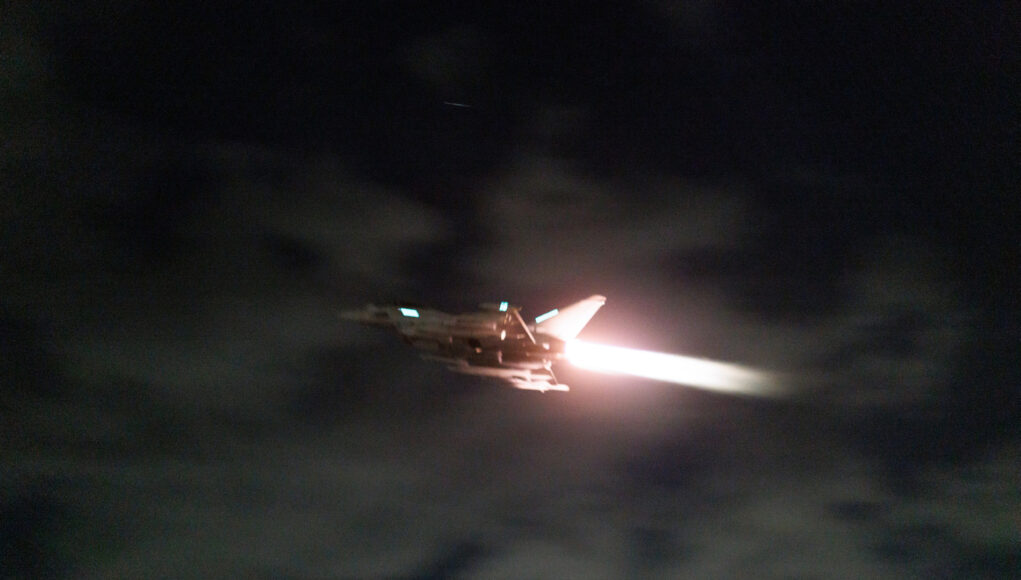


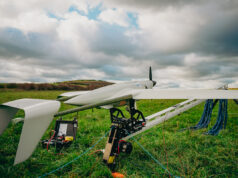
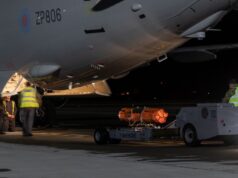
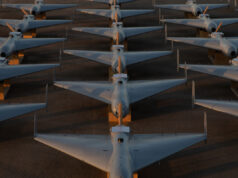
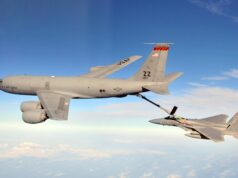
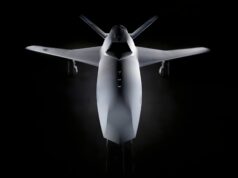

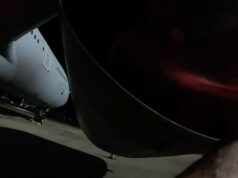


” This is only the beginning, they won’t stop now”
So says Keith “Halfwit” Park….AOC 11 Group!
“We shall fight them on the beaches”
sorry, “We shall greet them on the Beaches”.
“Well the times they are a changing”.
I do like that “Starmerillion” quote….(doesn’t sound as good as Churchillian)
Well it would be Starmerian rather than Starmerillian. Or was it originally Churchillillian.
Yeah. It was ok for him with all the big talk. Hiding in his bunker. He frought none. It was the poor public that had to back his words.
That’s bull shite do your history he was a Ist world war vetron
I believe he flew Hurricanes often enough visiting RAF Stations.
I think history has not been kind, or correct, to both Park and Lord Dowding
Considering there were various plots to kill him and he insisted on being on the Normandy beaches day 1 (until the King was used to thwart him) Im not sure that’s totally true. And he didn’t exactly take the safe choice in his youth either, considering he spent time in a Boer prison camp.
Well said
Were it not for AVM Keith Park, and a number of others like him ‘halfwits’ such as you would be speaking German!.
People only think of Winston Churchill as a true leader…
He definitely wasn’t a hero……..
The poor people who lost their lives because of him are the heros and thousands, millions died because of him.,
He was responsible for thousands of lives lost in The Gallipoli campaign and has been described as one of the greatest military blunders of World War I and there were a number of reasons for the failure of the Gallipoli campaign. He got demoted,.Plus,
He threatened chemical war on Germany.
He threatened the Welsh striking miners with the army.
” If they are hungry we will fill Thier bellys with lead”.
It gets worse..
Signs that Putin thinks Trump isn’t doing as he’s told, by way of indirect demonstration.
Or, Russian aircraft transiting between Kalingrad and Russia proper, as they’ve done for years, without transponders.
Close to NATO airspace, which prompts a response.
What has that to do with Trump?
Nothing if you’re point and the timing is entirely correct.
The point is that Trump’s apparent abandonment of NATO has emboldened Putin who now feels free to bait NATO countries, especially Baltic states, at will.
Daniele they have been testing responce times for years, games of cat and mouse, no pun intended, ‘far be it for me to teach you to suck eggs’ whats worse is they are getting bolder on the tech side of poking N.A.T.O, data breaches,cable and pipe destuction,propaganda, intel gathering. In todays world ! Defence is becoming a tech headace, Russia is the Shark that likes to just take a taste and learn for now,just hope they dont taste too much they think that the can have it all, its a different world for me, just sitting on the fence looking in, but i do share everyones concerns, War is not something i have experianced,nor do i wish too..but if i have to i will not sit idle, always good to muck in if needed .
Hi Mark.
Yes, I’m well aware, and it’s getting worse re Grey Zone.
They also transit to and from Kalingrad, which is why I questioned in this case.
I read once in diplomacy they always start with outrageous demands, knowing soft liberal west will compromise, so they get more.
I hope regards Cyber and Grey Zone we are responding in kind.
Daniele,
With reference to Grey Zone attacks, i first question how many foreign unknowns live in the UK, how many are assets or can be manipulated by there respective govenments, and what roles they have within our system ?
I do not envy our internal security services, bet they have there hands full, respects to them for all they do and dont ;-)
I guess that depends on whether he needs another distraction at his next disastrous press conference.
Bet the Typhoon pilot’s and ground crews are loving it, doing the job they wanted to do!
Yep . Its what they signed up for. Would be absolutely awsome . Whatever country your from ..whatever machine you fly.. it has to be a heck of a ride .
Thanks
Shame we don’t just blow them out of the sky, be a few less to worry about if and when it kicks off!
It will happen it’s just the start of something bigger, we should have responded when they invaded Ukraine give Putin an inch he’ll grab a mile.
Man …it’s been happening since the 80s this is regular stuff. Navy’s the same..forever shadowing russian ships or escorting.. the Russians even dnincredibky close flybys on the royal navy warships and no one fires. It’s just normal..Russian activity . Certainly nothing new .
Dare I ask what ‘dnincredibky’ means, your spellchecker did a doozy there. I’m guessing incredibly?
Shame we don’t protect out own borders as well as we do for others
I think we have a fair few more Typhoons protecting our borders than we have protecting Polands to be fair. That said if it all kicks off, the Poles are probably the first I would be wanting fighting on our side. Their contributions to our historical defence never seem to stop. We know about the BofB contribution with the most effective pilots and their agents supplying the first enigma machine and its secrets but only this week I learned that 44% of all intelligence reports from occupied Europe via SOE activities were by Polish volunteers. So let’s not forget their role in Britains, Europes and indeed the Worlds freedom too quickly.
Shane, the RAF provides QRA in the UK and aways has done.
Let’s sort this shit out, for once an tell Russia who is Boss,
Who is “boss” in a nuclear exchange. Everyone is dead. IQ of twelve year olds in this thread, I swear.
This has been going on for decades, it’s nothing new or strange or interesting or exciting or different! It’s just something they do and have been doing for years.
I’d be tempted to ignore them and give them enough rope to hang themselves, give warning and then blow them out of the sky.
here it was only about Russia invading Ukraine, but under German leadership the EU ratified the agreement in 2014 with 535 votes yes, which agreed on military and economic support, then they overthrew the president of Ukraine and burned Russian workers in the city hall, and then Russia invaded Crimea and entered Ukraine. Most importantly, now the Wehrmacht can build an army!!!
Nice bit of rewriting of history there. The ‘overthrown’ President was elected on the promise of joining the EU which he was about to ratify with the EU when strangely enough on the day before Putin gave him an urgent phone call literally making him an ‘offer he couldn’t refuse’ so he entered the signing ceremony that day without informing anyone in a fait accompli refusing to sign the prospective EU membership agreement. Even worse he suddenly proclaimed he was, without any reference to the electorate going to sign away Ukrainian freedom with a deal tying them to Russia, one presumes if one gives him any credit at all perhaps to avoid a prospective Russian invasion. Surprise, surprise the people he had violated and blindsided decided not to stand for his capitulation and the threatened invasion was back on the cards. I would say Trump learn from history defying the people has consequences.
……And does everyone think that the ‘boat’ people are coming over for a better life? Don’t be so green. This is an army of men travelling to various Countries ready to fight and take over the Countries they land in.
Hidden weapons have been found in various places and our leader is stupid enough not to put a stop to it.
Yes sir. Its absolutely true . Weapons have been found. And they are planning to overthrow us. It’s 100% true.
Some of these weird posts are like entering a parallel universe, is this just stage two of psyops replacing the avalanche of fake ads that thankfully have been eradicated, with obscure unrelated bot comments simply to disrupt the forum.
It’s the chemtrails you should be worried about.
It’s about time that NATO and especially this present government admitted and accepted that we are back in the cold war against Russia. There is only one thing that will keep Putin at bay and that’s to match might with migh, just like the Cuban missile crisis..We need to re-arm at a high rate and stop fancying about and take British Steel over. We have millions of tons of coal under North Notts and South Yorks to feed the converters at Scunthorpe so we need to become more self sufficient We need to consider conscription and national service too. For too long we have relied on.China and Russia for importing goods that could be made in Britain. We need to wake up and smell the coffee and we need to stop doing businesses that have a deplorable human rights culture that flows through both countries in China and Russia.
Must be true,the nice man on the tellybox said so innit bro? Hidden weapons have been found , where, Says who ? Got any hard verifiable evidence or are you just like the govt does saying ” trust me bro” If We, and our supposed allies the EU and socalled usa didn’t interfere in and destabilise countries because they dont like the govt or way of life there wouldn’t be huge numbers of people fleeing their homelands, if you read a book or two, a crazy idea ( who needs books when you’ve got social media innit)? but you’ll be surprised how many people do, you’ll discover that throughout history young men have moved to different places , sometimes overseas ,seeking a better life. often leaving their wives and children behind hoping to bring them along once they’ve settled , But anyway if you’re really worried about the UK being overthrown by foreigners nip over to Ukraine they desperately need people just like like you to man the trenches and prevent the Russian hordes from marching into Europe , or join the army it’s a great career (the man on the tellybox said so) you’ll get free clothes ,bed and board , learn a “trade” , 3 meals a day all that and wages too, plus you might even get a chance to kill some of the foreigners you’re so afraid of and if you’re really lucky their women and children too.
I’m sure there is some comprehension in that rant somewhere… actually I’m being too kind there really isn’t. To think we are creating ai to mimic the intelligence of a bottom rung Red neck just so they can argue unintelligible memes amongst themselves to stop real people having and expressing opinions. And this is just the beginning folks. So much for the democratising effects of the internet, how naive was that.
What a pity we can’t scramble to stop the actual invaders of our shores.
What are you talking about??
Putin must be directly confronted by Europe or We will be.
Its like dinky little dogs barking at a bear. Quite f’in literally. You know you stand zero chance if stuff hits the fan, yeah? And thats with US support and all. Nada. RAF using EUROfighter Typhoons. Any country that has military significance, use their own domestically developed aircraft. Not french aircraft but call yourself RAF. Cant believe you cunts sold off all the Harriers to US. Well, fukc.